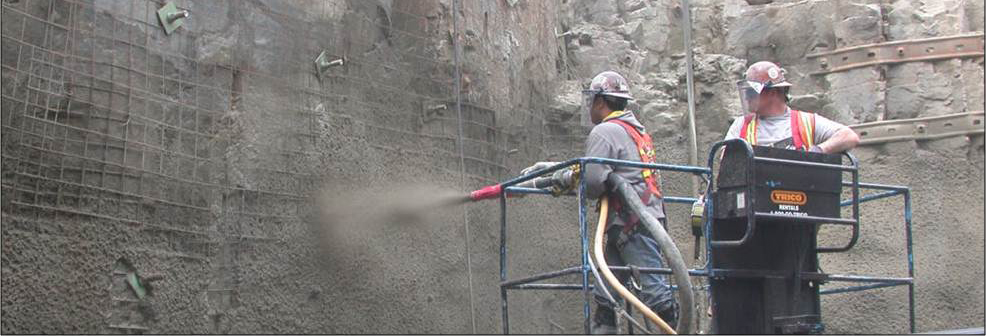PoolQ We are in the swimming pool design and construction industry as a general contractor. We subcontracted a large percentage of the work to complete a project — namely, the shotcrete of the pool shell, and were very unhappy with the results. The walls are not plumb and areas are not shot to the full thickness. We didn’t check out the contractor’s current work and he is incapable of making any repairs. We have done corrective chipping and bush hammering to get the walls plumb and areas at the proper grade. However, many areas need to be filled to the proper thickness up to 2 in. (50 mm). Can this be done with either a dry or wet mix? Do you need to bush hammer a recessed area to accept a minimum amount of new material in lieu of a feather edge? Is a wet mix acceptable to fill these areas given that the aggregate in it is generally up to 0.375 in. (9.5 mm) or so? With the dry mix being primarily concrete sand and cement it would seem more practical.
As you discovered, experience of the shotcrete contractor is key to a successful project. It takes an experienced and knowledgeable shotcrete team (the project manager, supervisor, pump or gun operator, nozzlemen, and finishers) to get a quality job. Answering your specific questions:
- Can this be done with either a dry or wet mix? Yes, either wet or dry mix will produce good results. You must be sure to properly prepare the substrate including chipping/bush hammering back to sound concrete, fully cleaning the surface and then bringing the surface to a saturated surface-dry condition (SSD).
- Do you need to bush a recessed area to accept a minimum amount of new material in lieu of a feather edge? Feather edging will create a very thin layer that would have more potential to spall when exposed to shrinkage or seasonal thermal movements. We recommend creating a square shoulder at least 0.75 in. (19.0 mm) deep to create an acceptable thickness of the patching layer.
- Is a wet mix acceptable to fill these areas given that the aggregate in it is generally up to 0.375 in. or so? With the dry-mix being primarily concrete sand and cement it would seem more practical. Wet-mix with a coarse aggregate can be shot in thin layers, but with a 0.375 in. coarse aggregate may require more finishing due to impact depressions of the aggregate in the shot surface. A dry-mix material without coarse aggregate may be easier to fill in the thin layers. Dry mix is typically less productive in volume placed per hour than wet mix, but in this relatively small-volume repair application, either process should be fine.

